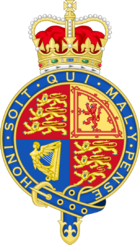Census Act (Northern Ireland) 1969 facts for kids

|
|
| Long title | An Act to make provision for the taking from time to time of a census for Northern Ireland and for otherwise collecting statistical information. |
|---|---|
| Citation | 1969 c. 8 |
| Dates | |
| Commencement | Immediate |
| Other legislation | |
| Amended by | 1984, 1991, 1999 |
| Relates to | Census Act 1920 |
|
Status: Current legislation
|
|
| Revised text of statute as amended | |
The Census Act (Northern Ireland) 1969 is an important law from Northern Ireland. It was passed on June 24, 1969. This law allows the government to count all the people living in Northern Ireland. This big count is called a census.
The law makes sure a census can happen every five years or more often. It is similar to the Census Act 1920 which covers England, Scotland, and Wales. The Census Act (Northern Ireland) 1969 is still the main law used for counting people in Northern Ireland today.
Contents
What is a Census?
A census is like a giant survey that counts everyone in a country or region. It collects basic information about people and their homes. Governments use this information to understand who lives where and what their needs are.
The word "census" comes from ancient Rome. Back then, it was used to count citizens for taxes and military service. Today, it helps governments plan for the future.
Why is a Census Important?
A census helps the government make good decisions. Imagine trying to plan schools, hospitals, or roads without knowing how many people live in an area. A census provides this vital information.
For example, if a census shows many young families in one town, the government might decide to build a new school there. If it shows more older people, they might plan for more healthcare services. It helps make sure everyone gets the services they need.
What Information is Collected?
The Census Act (Northern Ireland) 1969 lists the types of information that can be collected during a census. This information helps create a clear picture of the population. Here are some examples:
Personal Details
- Names, sex, age: This helps to know how many people are in different age groups. It also shows the balance between males and females.
- Nationality, birthplace, race, language: This helps understand the diverse backgrounds of people living in Northern Ireland. It shows where people come from and the languages they speak.
Home and Family
- Place of abode and character of dwelling: This tells us where people live and what kind of homes they have. For example, are they houses or apartments? This helps with housing plans.
- Condition as to marriage, relation to head of family, issue: This helps understand family structures. It shows how many people are married or single, and how many children are in families.
Education and Work
- Occupation, profession, trade or employment: This information shows what jobs people do. It helps understand the economy and plan for future job training.
- Education, professional and technical qualifications: This helps understand the skills and education levels of the population. It can help plan for schools and colleges.
Other Important Information
- Religion: This helps understand the religious makeup of the population.
- Any other matters: The law also allows for collecting other information. This is if it helps understand the social condition of the population. This means finding out about how people live and what their lives are like.
See also
- Census in the United Kingdom

